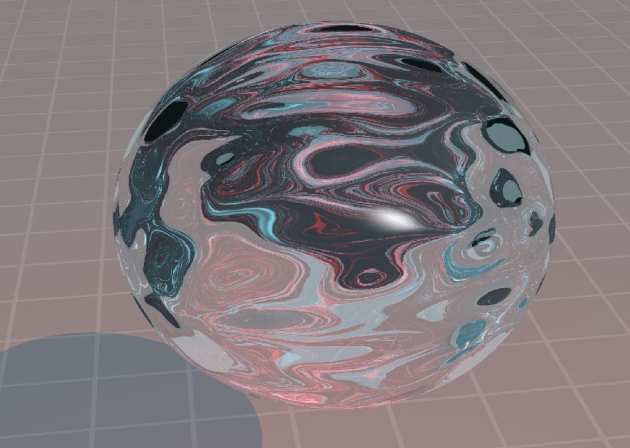Single-electron induced surface plasmons on a topological nanoparticle
A little over ten years ago a new class of materials was predicted and later realised experimentally. These new materials are insulating inside but have metallic surface.
Furthermore, their metallic surface is immune to environmental influences in contrast to the surface of an ordinary metal which becomes covered with oxide layer when exposed to air. The reason for these exotic properties lies in strong spin-orbit coupling which reorders the electronic levels in these materials.
 To understand how they are different from ordinary insulators is useful to bring an analogy from topology. Imagine a strip of paper - you can connect it to make either a cylinder or a Mobius strip [1]. The cylinder would be analogous to ordinary insulators which we are all familiar with. However in some materials made of heavy elements spin-orbit coupling can twist the band structure making it distinct from that of ordinary insulators - somewhat like the Mobius strip. These twisted band structures give rise to exotic properties and the materials became known as topological insulators.
To understand how they are different from ordinary insulators is useful to bring an analogy from topology. Imagine a strip of paper - you can connect it to make either a cylinder or a Mobius strip [1]. The cylinder would be analogous to ordinary insulators which we are all familiar with. However in some materials made of heavy elements spin-orbit coupling can twist the band structure making it distinct from that of ordinary insulators - somewhat like the Mobius strip. These twisted band structures give rise to exotic properties and the materials became known as topological insulators.
So far the interest has mostly focused on macroscopic samples of topological insulators. In particular, large research effort is aimed at employing the metallic surface states of electrons for applications in spintronics and quantum computation. Nanostructures of topological insulators received much less attention.
The idea behind the present project was that metallic surface should play a more prominent role in topological  nanoparticles as they have a larger surface-to-volume ratio. Gleb Siroki (TSM-CDT cohort 6) and his supervisors, Dr Vincenzo Giannini, Dr Derek Lee and Prof Peter Haynes have discovered this to be the case. Their theoretical calculations [2] predict that even a single electron in a metallic surface state of a topological insulator nanoparticle can drastically change its optical properties. This is surprising given that the nanoparticle consists of hundreds of thousands of atoms. Such an electron can enhance absorption at some wavelengths whereas at others it can completely screen the body of the nanoparticle from the incoming light. These findings may prove useful for areas of THz photonics and quantum information.
nanoparticles as they have a larger surface-to-volume ratio. Gleb Siroki (TSM-CDT cohort 6) and his supervisors, Dr Vincenzo Giannini, Dr Derek Lee and Prof Peter Haynes have discovered this to be the case. Their theoretical calculations [2] predict that even a single electron in a metallic surface state of a topological insulator nanoparticle can drastically change its optical properties. This is surprising given that the nanoparticle consists of hundreds of thousands of atoms. Such an electron can enhance absorption at some wavelengths whereas at others it can completely screen the body of the nanoparticle from the incoming light. These findings may prove useful for areas of THz photonics and quantum information.
[1] Figure credit: David Benbennick https://en.wikipedia.org/wiki/M%C3%B6bius_strip
[2] http://www.nature.com/ncomms/2016/160805/ncomms12375/full/ncomms12375.html
Also featured on: imperialcollege/newssummary/news_4-8-2016-11-5-15


